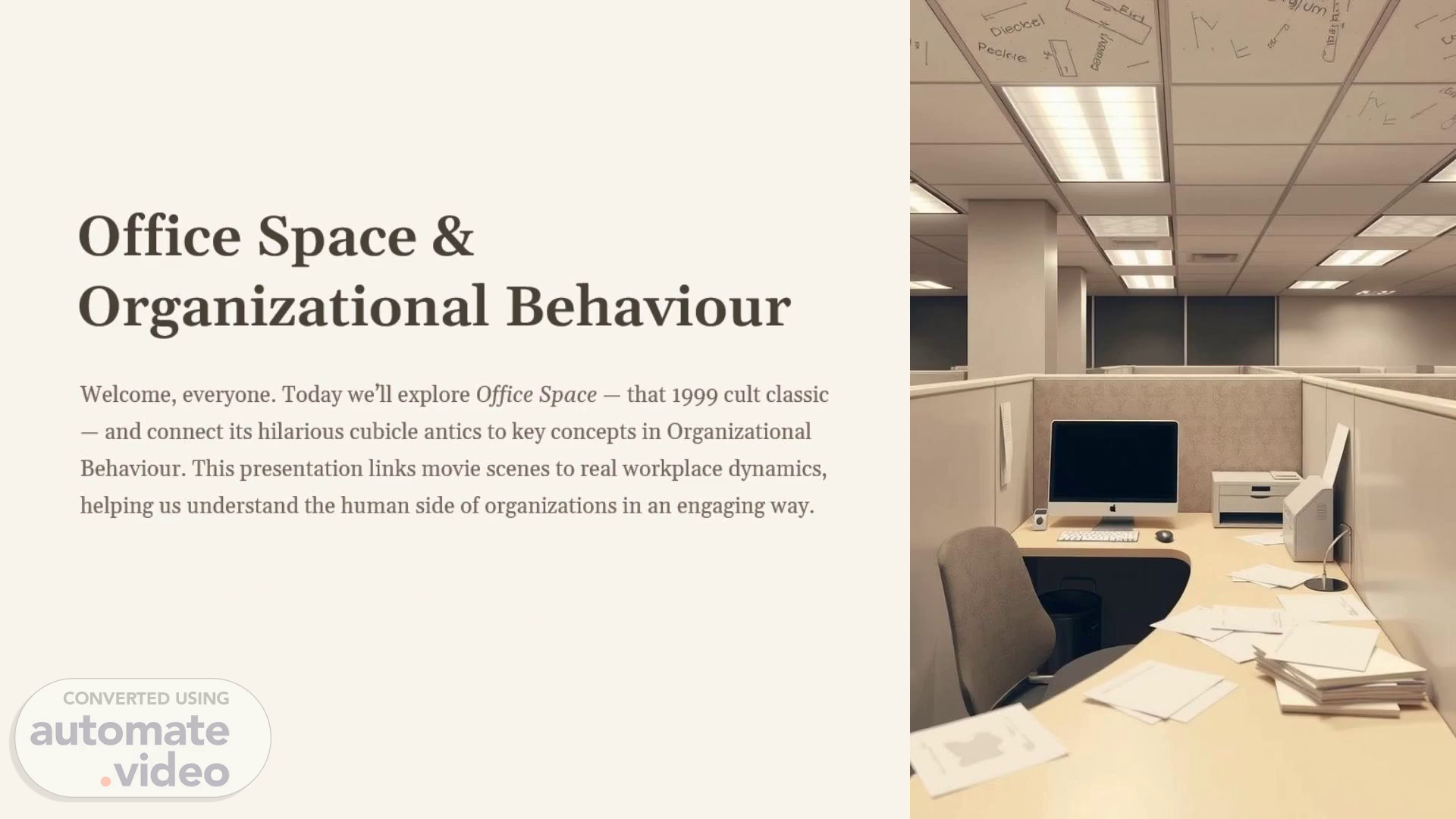Scene 1 (0s)
[Audio] The film explores the world of office politics, delving into the humorous yet relatable struggles of employees as they navigate bureaucratic red tape, tedious meetings, and stifling work environments. It examines how these cinematic depictions mirror real-world organizational challenges, highlighting the significance of effective communication, clear channels, timely feedback, and active listening in creating productive and engaged workplaces..
Scene 2 (29s)
[Audio] The film is famous for its hilarious take on office life, especially the epic printer-smashing moment that resonates with anyone who's faced pointless tech frustrations. Beyond laughter, it reveals universal issues of boredom, red tape, and burnout that plague many organizations worldwide.
Scene 3 (51s)
[Audio] Individual-level factors play a significant role in influencing employee performance. We investigate how attitudes, motivation, and cognitive processes impact an individual's thoughts, feelings, and actions within the workplace. This comprehension is vital as it enables us to design tailored interventions addressing unique needs and concerns, thereby boosting job satisfaction and overall well-being..
Scene 4 (1m 18s)
[Audio] Peter's journey shows how the removal of hygiene factors, such as worries, can lead to increased authenticity and productivity. His story illustrates the concept of intrinsic motivation, where autonomy and meaningful work become driving forces behind his performance..
Scene 5 (1m 37s)
[Audio] Bill Lumbergh's leadership style is characterized by micromanagement and a focus on rules, supervision, and rewards or punishments. This approach often leads to low employee morale and creativity, as employees feel controlled rather than trusted..
Scene 6 (2m 1s)
[Audio] Inefficient meetings can lead to frustration among employees, as they fail to provide meaningful information. Unclear memos can cause confusion and misalignment of expectations, resulting in disengagement. To overcome these challenges, it is essential to establish clear communication channels, providing timely feedback to ensure understanding and alignment..
Scene 7 (2m 23s)
[Audio] In many workplaces, informal networks can serve as a catalyst for change. These unofficial groups, often formed outside of traditional organizational structures, can bring together individuals who share common goals and frustrations. Peter, Samir, and Michael form a bond over their shared discontent with corporate norms, ultimately uniting to challenge the status quo. This type of group cohesion can be a powerful force for driving change, as it allows individuals to come together and work towards a common goal..
Scene 8 (2m 54s)
[Audio] Initech's organizational culture is characterized by contradictions between what they claim to value and how they actually behave. They espouse teamwork, suggesting a collaborative environment, but reward compliance over actual teamwork, indicating a culture of blind obedience rather than genuine collaboration. The everyday objects around them, such as malfunctioning printers and stolen staplers, serve as symbols of this disconnect. These artifacts reflect the deeper cultural reality, where words are empty and actions speak louder than intentions..
Scene 9 (3m 30s)
[Audio] When employees feel devalued, their expectations for respect and fairness are shattered. This breach of psychological contract can have severe consequences. They may disengage from their work, develop resentment towards the organization, or even retaliate in subtle or dramatic ways. It's essential to recognize and honor these psychological contracts to sustain employee motivation and reduce burnout..
Scene 10 (3m 55s)
Thank you for listening.
